A FULLY-INTEGRATED FACTORY
WOVEN ARTICLES
FIFTEEN CLOSELY-MONITORED MANUFACTURING STEPS
After more than two hundred years of experience our factory today focuses on fifteen scrupulously-monitored manufacturing steps, and any Brun de Vian-Tiran throw, blanket, scarf or shawl is the object of careful attention throughout its preparation. Let’s take a two-week* trip through our workshops in Isle-sur-la-Sorgue.
* the times are given as an indication only, as the steps do not always follow each other so closely
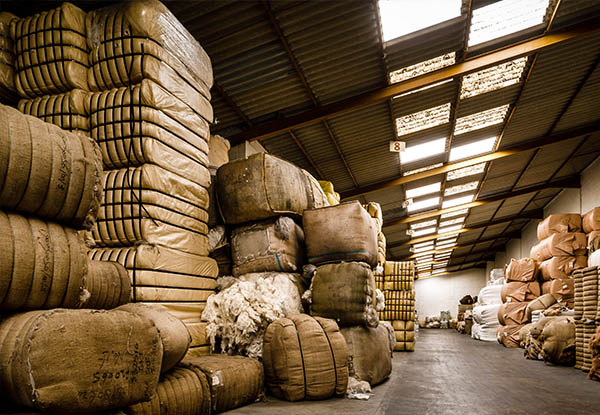

SEVERAL YEARS BEFORE THE MANUFACTURING OF YOUR FABRIC: THE PURCHASING OF RAW MATERIALS
Merino wools from France, Australia or South America, Mohair from the Cape of Good Hope, Asian Camel, Alpaca from Peru, Baby Llama from Bolivia, Yak from China, Cashmere from Mongolia and other even rarer fibers … Ever since the old days, when the Beaucaire Fair brought us wools from the distant Levant, Brun de Vian-Tiran has sought out and selected the most noble fibers in the world. Each is unique: length which gives an abundant fleeciness, fineness which ensures a soft, breathing fabric, luster which will give shine, crimp which will contribute warmth, a natural color shade which can range through infinite nuances of white, camel, grey, russet, or brown …
DAY 1: BLENDING
Like a winemaker blending different varieties of grapes to be able to produce a well-balanced wine, we blend different complementary fibers. A Brun de Vian-Tiran woolen blanket thus requires raw materials from six to eight different sources: South American wools contribute their special robustness, while those from Australia give softness and wools from France, their outstanding crimp, comfort and warmth.
And on the other hand, just as a winemaker can vinify grapes from particularly outstanding parts of a vineyard separately, our single-origin special designs are created to highlight their individual characters: the Merinos d’Arles Antique®, the finest wool in Europe, for its very special cuddly comfort; Cape of Good Hope Mohair for its frothy fleece and its shine; Peruvian Alpaca for its long fiber and its elegant natural colors …
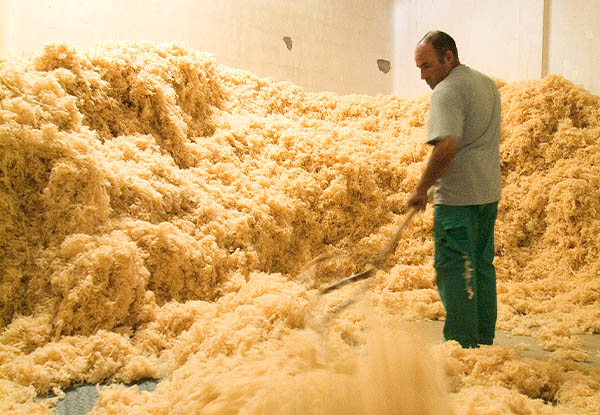

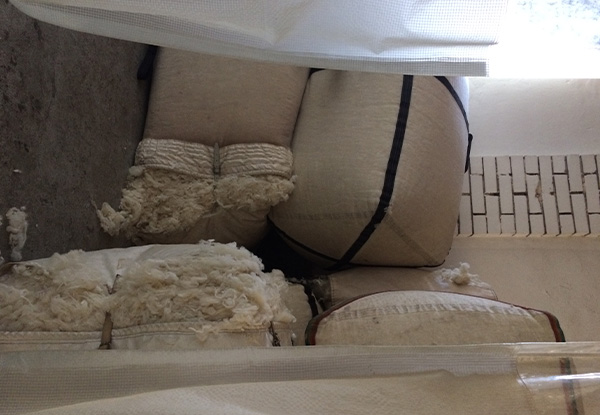

DAY 2: OILING
Unlike the old days when wools were worked with their natural grease, today our raw materials are washed before being put on the market. That is why a spraying process must nest be implemented to cover the fibers with a thin film of oil and water before working with them : in the past, olive oil was used for this.
The process enables the raw material to be lubricated and avoids static electricity. Later on, a final wash will remove this fine film of oil.
The choice and dosing of the oils employed is crutial when working with wools. This traditional technique is carried out in full conformity with today's environmental standars. Afterwards, the wool is left to rest for a few hours, giving the water time to penetrate into the heart of the fibers.
DAY 3: CARDING
Now the thread can be manufactured. Cards, traditional machines with rollers fitted with metallic teeth, open, separate and patiently align the millions of fibers which will go into your throw or your blanket. Carding machines thus produce a veil of wool which, divided longitudinally into strips, gives rolls of fragile wool “slivers”.
Brun de Vian-Tiran chose to spin carded wool as this technology is well-adapted to the naturally varied lengths of the fibers: the longest types bind and give solidity to the yarn, while the shortest can be lifted up by the scratching action of teasels and give delicious fluffiness to your fabric.
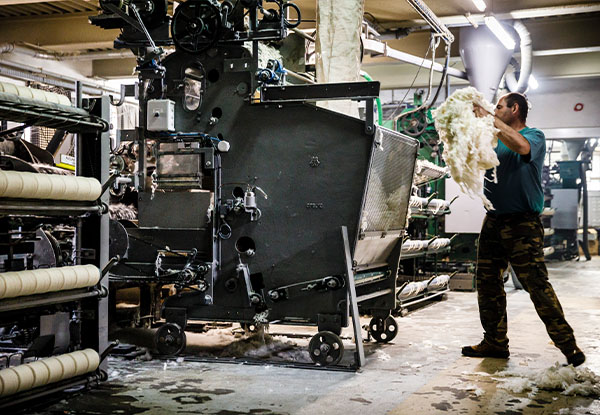

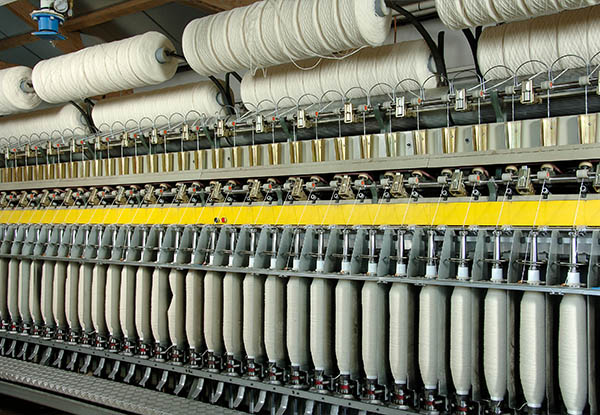

DAY 4: SPINNING
Spinning is the second step in manufacturing thread. In a process imitating the movement of a spinning wheel, the sliver of carded wool is drawn out, and then undergoes one hundred to five hundred twists per meter, giving it combined fineness and solidity.
Brun de Vian-Tiran’s know-how, the French reference in natural blanket manufacturing, means we master this very special art: at this stage, a solid yarn must be produced which will nevertheless allow later teaseling steps to efficiently create the soft, warm fleeciness of your cloth.
DAY 5: WINDING
As the reels produced by the spinning step are not suitable for the weaving process, the threads are transferred to more appropriately-shaped spools. During this process, electronic monitoring of the yarn regularity centimeter by centimeter means that possible causes of defects can be eliminated. The yarn is now ready for weaving.
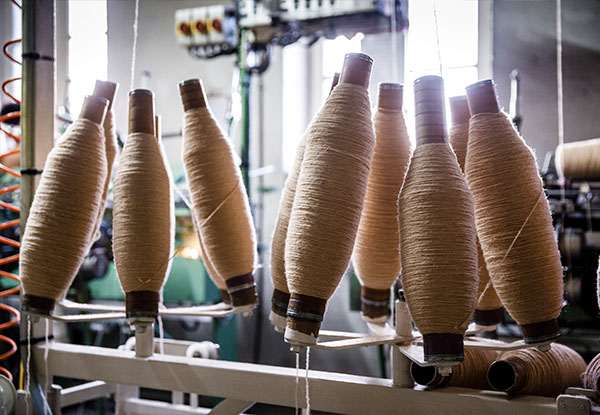

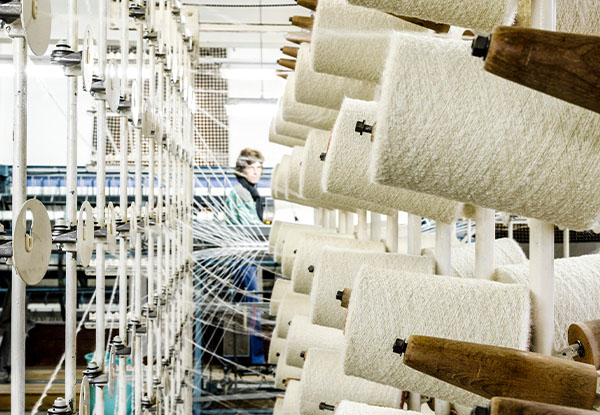

DAY 6: WARPING
Weaving consists of crossing the longitudinal warp threads with transversal weft yarn; in the past, the weft material was handled by shuttles. Warping is the step which sets up the longitudinal warp run of the future fabric: working from the prepared spools, it rolls up one to four thousand parallel threads. This is a very high-precision task: steady tension, respect for color alternation for patterned throws – everything is important for the next step.
DAY 7: WEAVING
The loom machinery begins to add the weft threads, which crisscross with the warp to start producing the final material. Your future fabric will acquire some of its qualities from this interweaving: a simple plain weave for a very natural shawl or for an airy light Mohair throw, a Batavia or a Satin weave better adapted to producing a thick fabric for a cozy blanket, or a complex Double-weave for very heavy, warm traditional articles. The result is an approximately forty-five meter long piece of fabric.
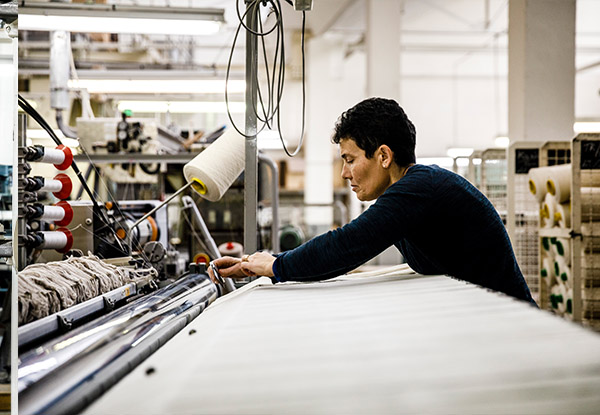

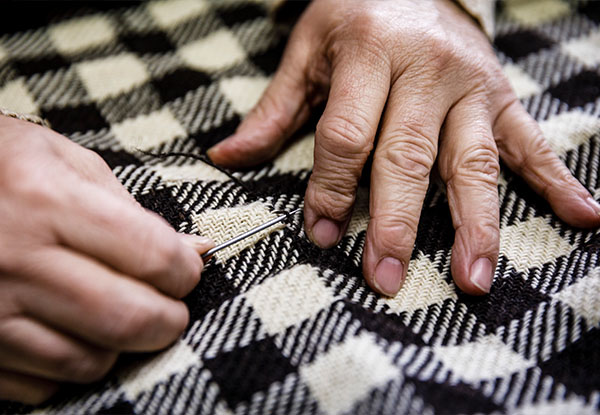

DAY 8: BURLING
A team of seamstresses, with their skilled hands and eagle eyes, takes over for the next step. Each meter of the fabric is carefully inspected and any possible defects are pinpointed: missing threads, small pieces of plants which may remain in the wool after shearing … our experts make sure there will be no defects in the fabric which will soon surround you with well-being.
DAY 9: DYING
Instead of the natural white, cream, camel, grey, etc. tones of fibers such as Alpaca, Llama, or Cashmere, you may well want to be surrounded with soft, lively, intense colors, or with elegant or brightly-patterned designs…
Our dye workshop operations fully respect the environment and of course the Sorgue, the river which has supplied the water for our textile treatments since 1808. Dying may take place on the flock wool before carding, on the spools before a throw pattern is woven, or even on the length of woven material, for plain-colored fabrics.
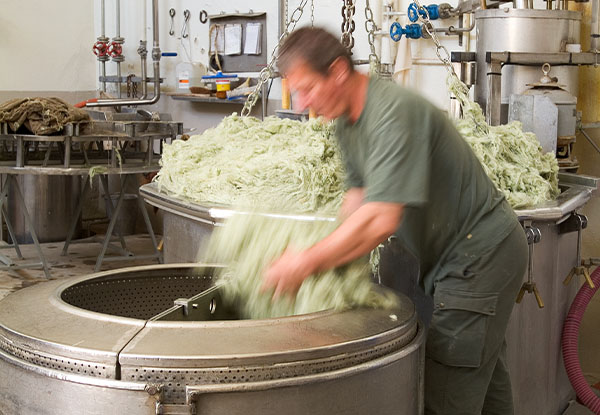

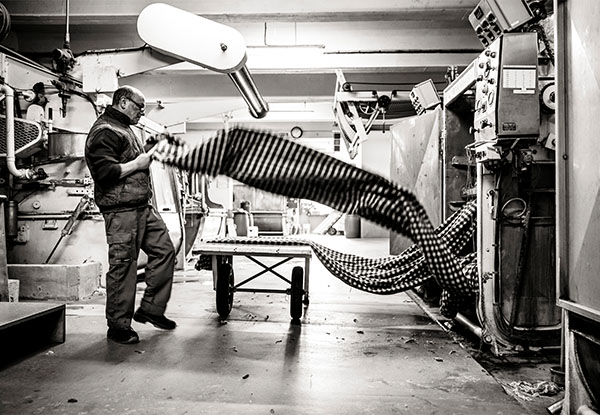

DAY 9: FULLING
Fulling, or milling, is Brun de Vian-Tiran’s oldest activity, and one which the factory has been involved in since its creation in 1808. A little-known, frequently forgotten step today, fulling is indispensable for the robustness of the fabric. It consists in shrinking the fabric both in length and width, in order to reach its final dimensions, its thickness, and its feel. The process also causes the fabric threads to tangle together and enables efficient teaseling in a later step. It is a very tricky operation, and requires considerable experience to achieve the desired result. In the old days, fulling was carried out by mechanical hammers powered by water wheels on the Isle-sur-la-Sorgue waterways. Today, fabrics soaked with water and soap are swiftly drawn through rollers in a stainless steel tank.
DAY 10: RAISING
Autorisé par un bon foulage, le lainage, également appelé grattage, est l’étape où se révèle la toison composée des superbes fibres contenues dans le tissu. Autrefois réalisé à l’aide de chardons végétaux, il se fait aujourd’hui principalement par des chardons métalliques uniques et exclusifs, spécialement créés par notre manufacture.
Le grattage aux chardons, du fait qu’il procède de millions de micro-opérations respectant l’intégrité du fil, permet de révéler une toison abondante tout en préservant la solidité de votre future étoffe. C’est grâce à lui que celle-ci sera moelleuse, abondante ou bien légère, raffinée, ou encore superficielle et duveteuse… Les chardons végétaux sont encore utilisés dans la manufacture pour les tissus exceptionnels.
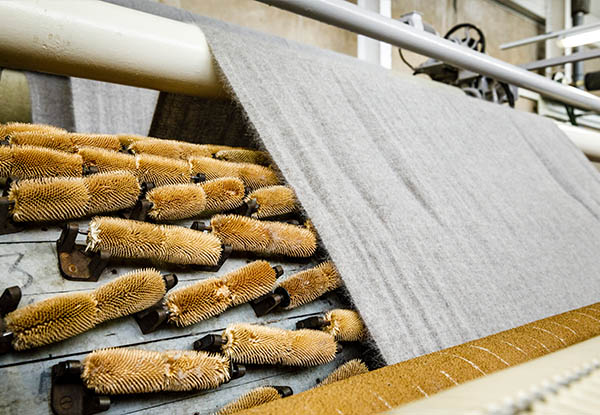

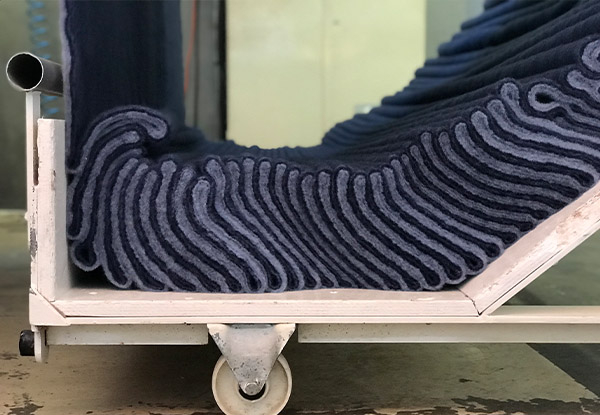

DAY 11: DRYING
Jusqu’à maintenant, l’étoffe, depuis le foulage, est restée à l’état humide pour être mieux travaillée. Il s’agit maintenant de la sécher, étape qui fixera également sa dimension définitive.
La « rame » était autrefois un grand étendoir que venait balayer le Mistral, vent dominant de notre région. Aujourd’hui, l’opération est réalisée par un système de chauffage et un contrôle électronique strict des conditions de température et d’humidité afin de préserver la délicatesse et la douceur des fibres.
DAY 12: DRY FINISHING
Votre étoffe à présent sèche, il s’agit de lui conférer son aspect définitif. Elle peut être tondue, opération qui permet aux poils de Chameau, d’Alpaca et de Lama de se dresser pour constituer un velours chic et très chaud. Elle peut être ébouriffée pour tirer parti d’une laine de France naturellement très frisée ou permanentée pour de très chaudes couvertures d’un exceptionnel gonflant. Ou bien rabattue pour un effet drapé élégant.
Ou brossée, dans le cas du Mohair, pour une ondulation qui met en valeur la brillance de cette fibre. Ou encore calandrée, sous haute pression, pour des plaids chics et plombés …
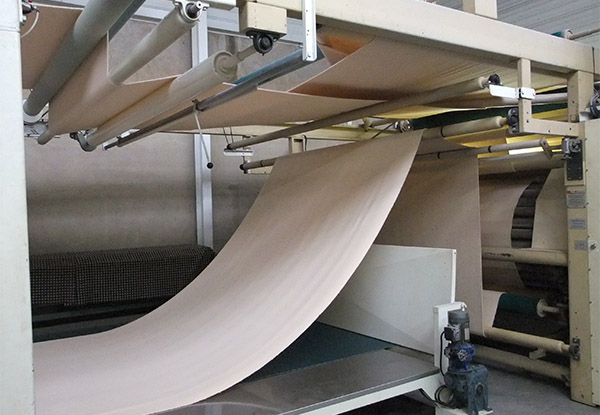

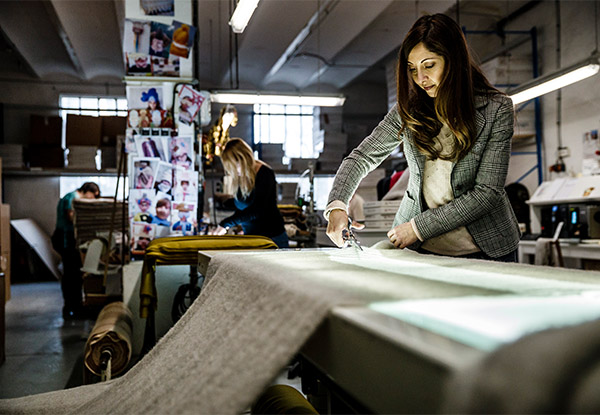

DAY 13: ARTICLE PRODUCTION
The cloth is finally finished. The article production step involves cutting, hemming, labeling and boxing the item which we hope will ensure your feeling of well-being.
The Brun de Vian-Tiran factory offers a unique service consisting in maintaining a permanent stock of all the articles listed in our collections. The fabric you choose can therefore be shipped and delivered at very short notice to your home address or to your distributor.
L’étoffe est enfin terminée. L’étape de confection consiste à présent à couper, border, étiqueter et mettre sous boîte l’article qui, nous l’espérons vous entourera de bien-être.
La manufacture Brun de Vian-Tiran offre un service unique qui consiste à tenir un stock permanent de tous les articles proposés à la collection. L’étoffe de votre choix pourra donc être expédiée et livrée dans de très brefs délais à votre domicile ou chez votre revendeur.
PADDED ARTICLES
Since 1981, Brun de Vian-Tiran has delighted France first with its creation and manufacturing of quilts and mattress overlay, then with pillows stuffed with animal fibers: wool, camel, cashmere… Quilts which offer unique levels of comfort, because these fibers are naturally the best in the world for regulating humidity. They enable the use of fully breathing cotton covers. Travel through the different manufacturing steps for these articles designed for well-being in our workshop.
SELECTION
Your sleep truly deserves two hundred years of know-how! To surround you with well-being, Brun de Vian-Tiran has sought out and selected noble fibers for over two centuries now. In the special case of our quilts and padded articles, we pay very close attention to the volume retention of our fibers and consequently, to their natural crimp. We therefore call on the Alps, near to our home region, to supply the fine, very crimped padding for our wool-filled quilts. For the quilts padded with silk, we have chosen a very special hollow fiber: the highly insulating Tussah silk.
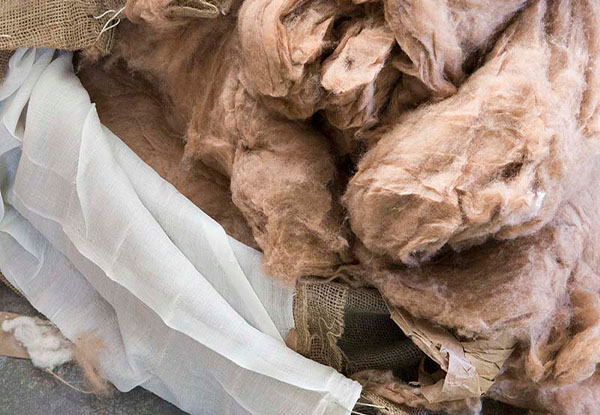

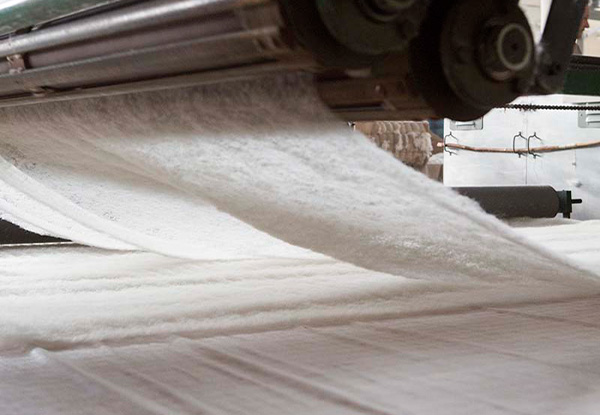

DAY 1: CARDING - LAPPING
Carding involves separating and aligning wool fibers in parallel. It prepares wool veils, which can then be overlapped to provide the “lapping” of your future quilt, mattress overlay or pillow.
DAY 2: STITCHING
The stitching has a major technical role to play, as it must ensure that the fibers are firmly held in place while at the same time allowing them to breathe and retain their volume by letting the air circulate.
This is the price of your well-being: the quality of your sleep depends primarily on humidity regulation by your bedding. The stitching on Brun de Vian-Tiran quilts is carried out individually, on a frame, a process which enables the stitching tension to be evenly distributed.
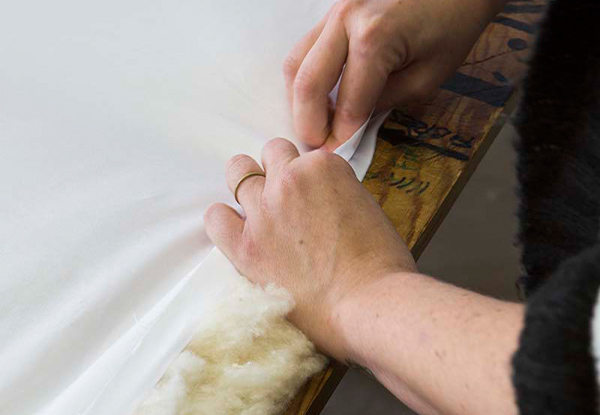

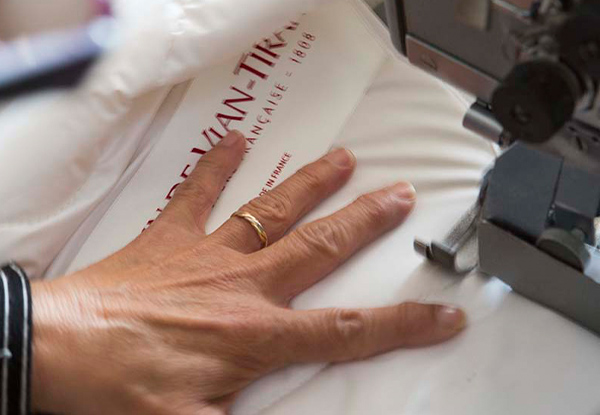

DAY 2: ARTICLE PRODUCTION
A line of sewing sets the contour around the edges of your quilt. Then as a binding over this sewn line, we carefully apply a folded bias cotton border. Lock-stitching is used throughout, guaranteeing firm sewing lines and avoiding any risk of unraveling.